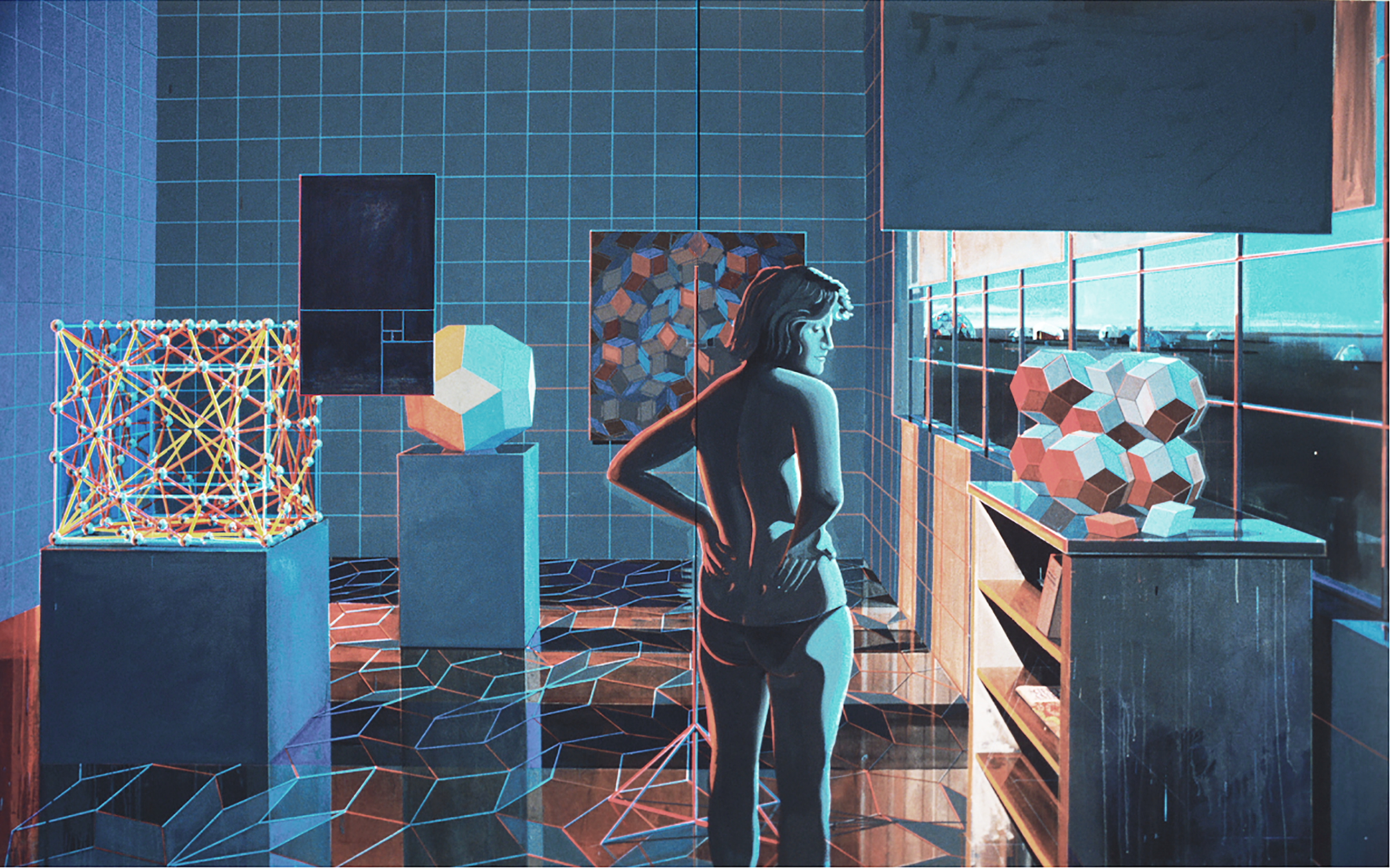The Local newsletter is your free, daily guide to life in Colorado. For locals, by locals.
Clark Richert, Colorado’s seminal abstract geometrical painter, says the pattern of the quasicrystal, a molecular structure with imperfect pentagonal symmetry, has been showing up in his work since before he knew what it was—actually, since before anyone knew.
Quasicrystals fit into one another in a sort of organic tessellation, or a pattern that doesn’t perfectly repeat itself. The structure was thought to be impossible until 1982, when a Nobel Prize winner discovered one under a microscope. But Richert has been etching colorful works using their geometric pattern since the 1960s, when he was a master of fine arts candidate at the University of Colorado Boulder and a founding member of Trinidad, Colorado’s (now gone) artist community Drop City.

Now, the Museum of Contemporary Art Denver will celebrate his five-decade career with a retrospective of his trippy, patterned paintings in Clark Richert in Hyperspace, which is open through September 1.
Richert’s math-informed work—in which the artist literally breaks out his ruler and measures geometrically sound compositions—has helped to catalyze a global movement of pattern and decoration in art, a vein in contemporary painting that, thanks to Richert, has been anchored to Colorado.
After leaving Drop City, the Centennial State painter helped launch the influential artist cooperative Criss-Cross in Boulder in the 1970s, creating more gravity for his style of geometry-minded work. From his post as a professor at the Rocky Mountain College of Art and Design from 1988–2018, Richert spent three decades shepherding Colorado students in their pursuits of yoking math and art. To the Nth Degree, an auxiliary MCA exhibition accompanying Clark Richert in Hyperspace, will feature a selection of Richert’s RMCAD mentees.
“He’s arguably the most important artist working in Colorado today,” says Zoe Larkins, the MCA assistant curator behind the exhibition.

Throughout his career, Richert has leveraged mathematical patterns and geometry to paint abstract spaces, tessellations, or 2D works that employ some combination of the two. So how could the Colorado artist have for so long utilized the quasicrystal’s pattern, without knowing that it exists? For Richert, it just goes to show how integral mathematical patterns are to how we think and relate to the world, whether or not we realize it. He says he sees patterns everywhere, especially the quasicrystal’s, because its geometry is defined by “the golden proportion,” a ratio used by many artists to lay out aesthetic compositions (not to mention the proportionality of Leonardo Da Vinci’s “Vitruvian Man”). But the golden proportion tends to show up well beyond artists’ canvases, too. Its formula can be found throughout the natural world, in the spiral of Nautilus shells, the patterned center of a sunflower, even in the spiral of galaxies, like our own Milky Way.
To Richert, it’s no surprise artists and art appreciators alike are drawn to something so formulaic. After all, people are a part of nature, too. “Our biorhythms are patternistic,” Richert says. “I think humans recognize patterns and are attracted to pattern, and that would include me.”
The Boulder Museum of Contemporary Art will also celebrate Clark Richert this summer with Clark Richert: Pattern and Dimension, a museum-wide survey of his career in painting, animation, and installation on view through September 15.
If you go: Clark Richert in Hyperspace is open through September 1 at MCA Denver, 1485 Delgany St.








